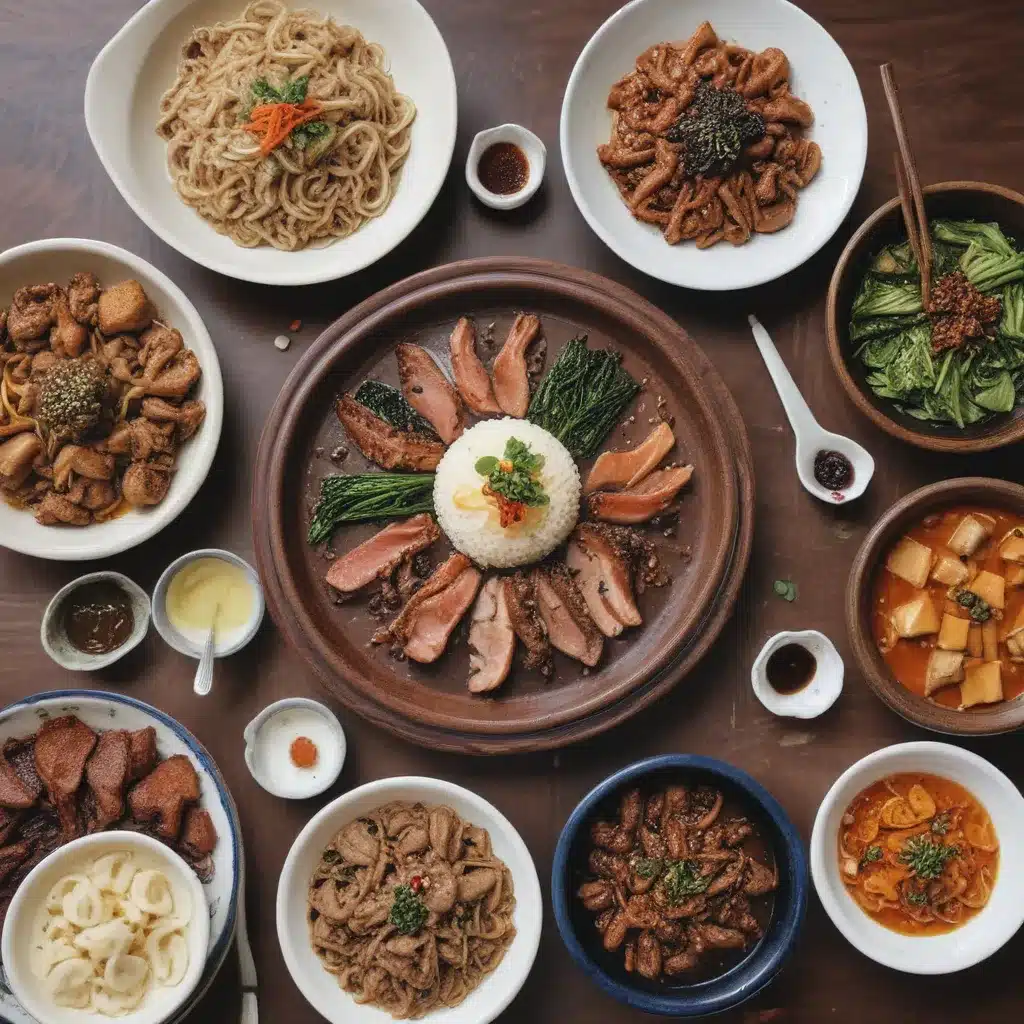
Discovering the Delights of Korean Culinary Wonders
As a self-proclaimed food enthusiast, I’ve always been captivated by the rich tapestry of global cuisines. But it wasn’t until I embarked on a journey to the land of the morning calm that I truly fell in love with the mouthwatering delights of Korean cuisine. From the sizzling barbecue to the fermented flavors of kimchi, every bite has left an indelible mark on my taste buds, inspiring me to uncover the stories and traditions that lie behind these culinary masterpieces.
Embracing the Spice of Life
Let’s be honest, the prospect of diving headfirst into the world of Korean spices can be a bit daunting, even for the most adventurous eaters. But trust me, once you’ve conquered that initial fear, you’ll be rewarded with a whole new level of flavor and sensory delight. The secret lies in understanding the unique nature of Korean spices – they’re not here to simply set your mouth on fire, but rather to gently warm and enhance the other ingredients, creating a harmonious symphony of tastes.
I’ll never forget the first time I tried a traditional Korean dish like kimchi jjigae (kimchi stew) or dalk galbi (spicy stir-fried chicken). The initial warmth slowly blossomed on my tongue, enveloping my senses with a depth of flavor I had never experienced before. It was like a gentle hug from a dear friend, inviting me to slow down, savor every bite, and truly appreciate the nuances of the dish.
But let’s not forget that Korean cuisine offers a spectrum of spice levels, catering to all palates. If you’re not quite ready to dive into the fiery depths, there are plenty of milder options that still pack a flavorful punch, like the comforting soon-dubu jjigae (soft tofu stew) or the slightly sweet and tangy japchae. And for those brave souls who seek to conquer the heat, dishes like haemul-ddeok-jjim (spicy seafood and rice cake stew) or maeun-galbi-jjim (spicy braised beef short ribs) will test your limits and leave you in awe of the Korean culinary prowess.
Discovering the Stories Behind the Dishes
One of the most captivating aspects of Korean cuisine is the rich history and cultural significance that lies behind each dish. Take, for example, the beloved budae jjigae, or “army base stew.” This hearty creation was born out of the scarcity of the Korean War, when locals near American military bases would ingeniously combine surplus ingredients like Spam, sausages, and instant noodles to create a satisfying and comforting meal.
Today, budae jjigae has evolved from its humble origins, becoming a beloved national dish that’s celebrated for its unique fusion of Korean and American flavors. It’s a testament to the resilience and creativity of the Korean people, who have a knack for transforming adversity into culinary masterpieces.
But the culinary stories don’t end there. As I explored the vibrant food scene in Korea, I was constantly amazed by the ways in which local traditions and ingredients have been woven into the fabric of the cuisine. From the intricate preparation of traditional side dishes like kongbap (rice with beans) to the regional variations of classic dishes like bibimbap, each bite seems to whisper a tale of the land and its people.
Savoring the Seoul of Korean Cuisine
As I immersed myself in the bustling streets of Seoul, I couldn’t help but feel a sense of excitement and anticipation with every corner I turned. The city is a veritable playground for the senses, where the aromas of sizzling barbecue, the vibrant colors of side dishes, and the lively chatter of locals and visitors create a symphony of culinary delight.
One of the highlights of my journey was discovering the vibrant food markets, where I found myself lost in a maze of stalls offering an endless array of regional specialties and local delicacies. From the iconic Noryangjin Fisheries Market, where I watched in awe as skilled vendors expertly prepared fresh seafood, to the charming Gwangjang Market, where I indulged in the street food delights of tteokbokki (spicy rice cakes) and bindaetteok (mung bean pancakes), every step was a revelation.
But the true essence of Korean cuisine can’t be found solely in the bustling markets or the Michelin-starred restaurants. It’s in the humble, family-run establishments, where the recipes have been passed down through generations and the love for food is palpable in every dish. It’s in the jjimjilbang (traditional Korean saunas) where locals gather to unwind, refuel, and share stories over a hearty meal. It’s in the backstreet alleyways, where the aroma of sizzling meat and the laughter of friends create a tapestry of culinary community.
Bringing the Flavors Home
As my time in Korea drew to a close, I found myself reluctant to leave the vibrant and flavorful world I had discovered. But like any great journey, the memories and lessons I gained would forever shape my relationship with food and travel.
Back in Boston, I’ve made it my mission to share the wonders of Korean cuisine with anyone who will listen. Whether it’s introducing friends to the addictive crunch of kimchi or hosting a Korean-inspired dinner party complete with soju cocktails and lively conversations, I’m determined to spread the love and appreciation for this rich culinary tradition.
And who knows, maybe one day I’ll even don an apron and try my hand at mastering the art of Korean barbecue, or perhaps I’ll embark on a quest to find the perfect bulgogi marinade. After all, the beauty of Korean cuisine lies in its ability to transcend borders and bring people together, one delicious bite at a time.
So, my fellow culinary adventurers, I invite you to join me on this journey of taste bud tourism. Embrace the spice, uncover the stories, and let the flavors of Korea ignite your senses and your soul. The culinary wonders of this captivating country are waiting to be discovered, and trust me, your taste buds will thank you.
